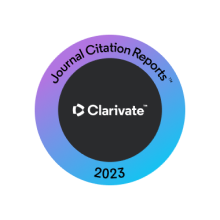Abstract
Background: The Rapid Access Chest Pain Assessment Clinic (RACPAC) streamlines the evaluation of low to intermediate-risk chest pain patients, reducing hospitalisation and healthcare costs. However, there is limited data on the virtual model of care for RACPAC.
Aim: We sought to evaluate the structure, cost-effectiveness, and imaging modalities performance of face-to-face and virtual RACPAC in an Australian setting.
Methods:A retrospective analysis of patients attending the RACPAC within a large Australian quaternary hospital between 2012 and 2021. We described the clinic parameters and imaging modality utilisation with parametric and non-parametric descriptive statics. Patterns of diagnostic modality utilisation were assessed with logistic regression. A p-value
Results: 3,976 consecutive patients attended RACPAC, with a mean age of 55.2 years (±11.6), and 48.7% were females. RACPAC transitioned to Virtual service during the COVID-19 pandemic, witnessing the highest attendance rate at 95%, despite increased patient load by 10.7%, with a lower re-presentation rate of 1.5% compared to 2.8% pre-pandemic (p
Conclusion: This study highlights the feasibility, cost-effectiveness and acceptability of virtual RACPAC, emphasising its potential to extend RACPAC services to remote areas or limited-resource countries. It underscores CTCA's utility as a diagnostic tool in the RACPAC setting.
Recommended Citation
Shawki, Marwan; Rodrigues, Thalys Sampaio; Al-Fiadh, Hussein; MNursing, Karen Sanders; and Al-Fiadh, Ali H.
(2025)
"Rapid Access Chest Pain Assessment Clinic: an Australian Virtual Care Experience,"
Journal of the Saudi Heart Association: Vol. 37
:
Iss.
3
, Article 7.
Available at: https://doi.org/10.37616/2212-5043.1442
Creative Commons License

This work is licensed under a Creative Commons Attribution-Noncommercial-No Derivative Works 4.0 License.




